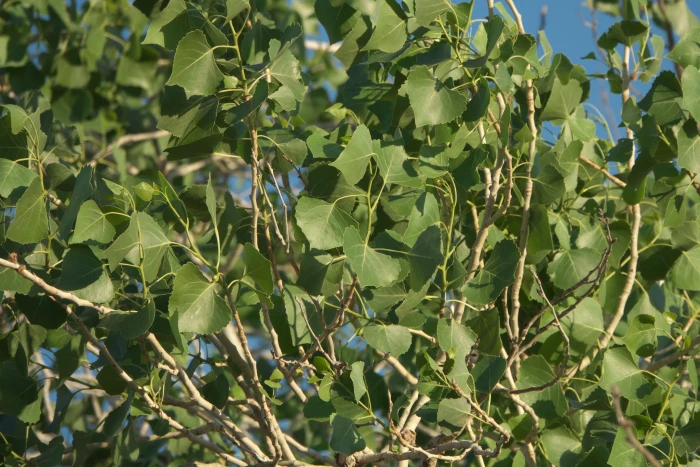Fremont Cottonwood
(Populus fremontii)
Fremont Cottonwood (Populus fremontii)
/
/

Robert Webster
CC BY-SA 4.0
Image By:
Robert Webster
Recorded By:
Copyright:
CC BY-SA 4.0
Copyright Notice:
Photo by: Robert Webster | License Type: CC BY-SA 4.0 | License URL: http://creativecommons.org/licenses/by-sa/4.0/ | Rights Holder: Robert Webster | Publisher: iNaturalist | Date Created: 2021-04-03T00:54:47-07:00 |












































































Estimated Native Range
Climate Requirements for Lagos, Nigeria
| This Plant | Your Site | Plant Suitability for Your Location | ||
|---|---|---|---|---|
| • Precipitation | 2" - 63" | 61" | Aquatic | Aquatic |
| • High Temp. | 69°F - 110°F | 91°F | Your summer temperatures are normal for this plant. | Excellent |
| • Low Temp. | 3°F - 59°F | 73°F | OK, but your winter temperatures are warmer than normal for this plant | OK |
This plant may not grow well at your location - your precipitation is too high.
Summary
Populus fremontii, commonly known as Fremont Cottonwood, is a deciduous tree native to riparian zones along streams and rivers in the Southwestern United States and northern through central Mexico. It can grow rapidly to a height of 20-80 feet and a width of 3-50 feet. The species is named after John C. Frémont, a 19th-century American explorer and military officer. This tree is characterized by a broad, open canopy with heart-shaped leaves that flutter in the wind, creating a soothing sound. The bark is smooth and whitish when young, becoming deeply furrowed with age. In spring, it produces inconspicuous flowers followed by cottony seeds that disperse widely. Fremont Cottonwood is particularly noted for its vibrant yellow fall foliage.
Fremont Cottonwood is valued for its fast growth and ability to thrive in wet environments, making it an excellent choice for riparian restoration projects. It provides critical habitat for wildlife, including birds and butterflies, and is used in larger native plant gardens, natural landscaping, and for erosion control. It is also planted for shade in parks and recreation areas. This species prefers full sun and can tolerate a range of water conditions, from low to medium, but requires soils with good drainage. While it is a beneficial species for habitat restoration, it can have aggressive roots that may interfere with nearby structures or plumbing systems. Gardeners should be aware of its potential size and space requirements when planting.CC BY-SA 4.0
Fremont Cottonwood is valued for its fast growth and ability to thrive in wet environments, making it an excellent choice for riparian restoration projects. It provides critical habitat for wildlife, including birds and butterflies, and is used in larger native plant gardens, natural landscaping, and for erosion control. It is also planted for shade in parks and recreation areas. This species prefers full sun and can tolerate a range of water conditions, from low to medium, but requires soils with good drainage. While it is a beneficial species for habitat restoration, it can have aggressive roots that may interfere with nearby structures or plumbing systems. Gardeners should be aware of its potential size and space requirements when planting.CC BY-SA 4.0
Plant Description
- Plant Type: Tree
- Height: 40-80 feet
- Width: 30-50 feet
- Growth Rate: Rapid
- Flower Color: N/A
- Flowering Season: Spring
- Leaf Retention: Deciduous
Growth Requirements
- Sun: Full Sun
- Water: Medium
- Drainage: Fast, Medium
Common Uses
Bee Garden, Bird Garden, Butterfly Garden, Edible*Disclaimer: Easyscape's listed plant edibility is for informational use. Always verify the safety and proper identification of any plant before consumption., Fragrant, Low Maintenance
Natural Habitat
Native to riparian zones along streams and rivers in the Southwestern United States and northern through central Mexico
Other Names
Common Names: Fremont’s Cottonwood , Cottonwood , Álamo
Scientific Names: Populus fremontii , Populus fremontii var. fremontii
GBIF Accepted Name: Populus fremontii S.Watson